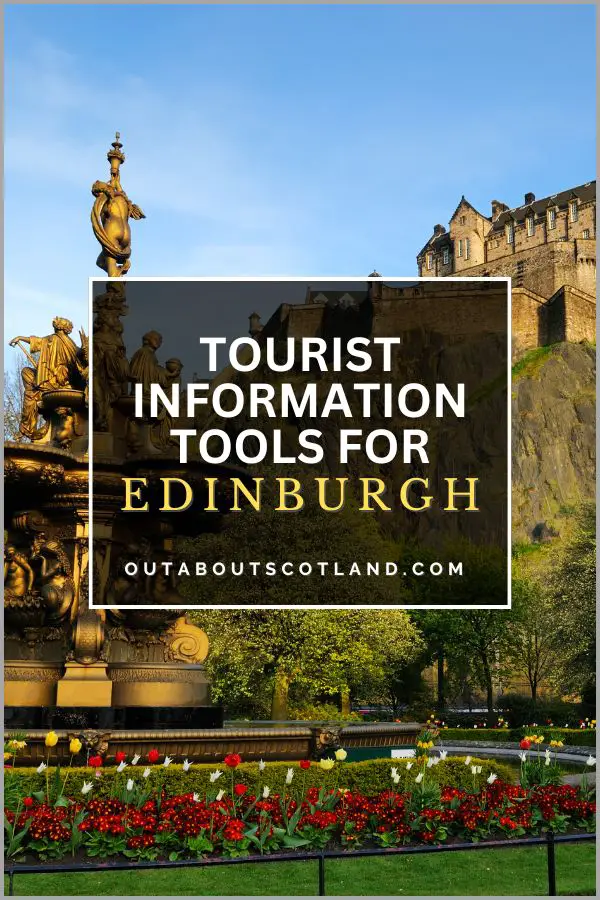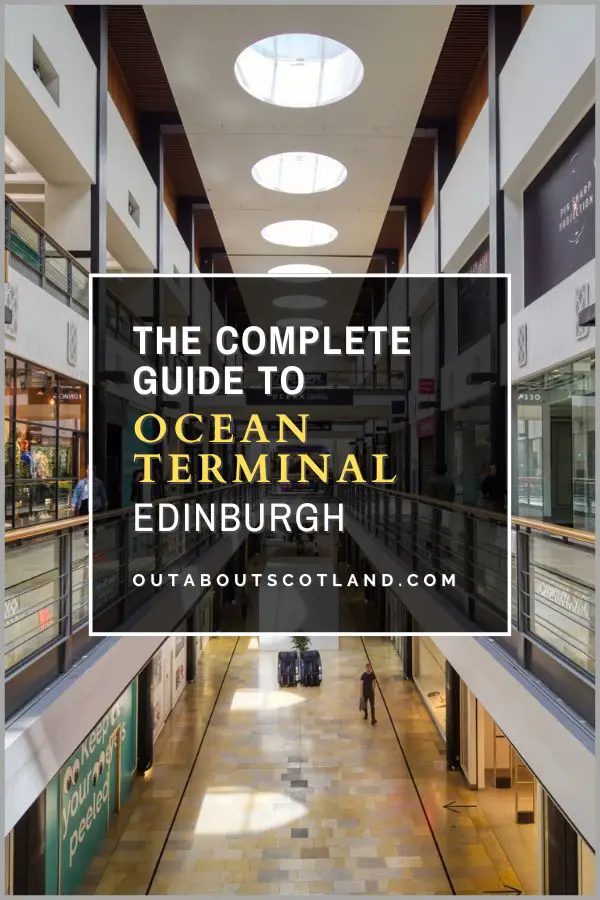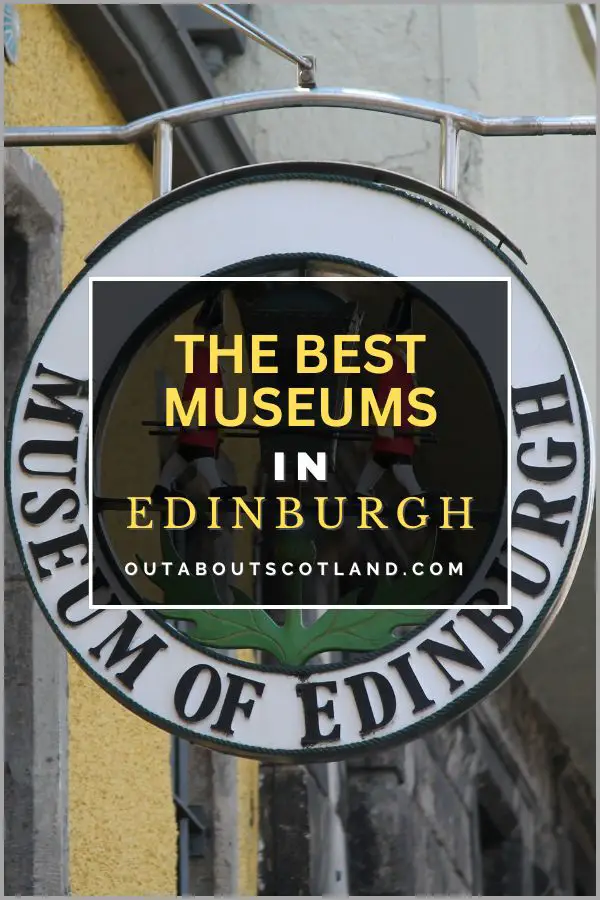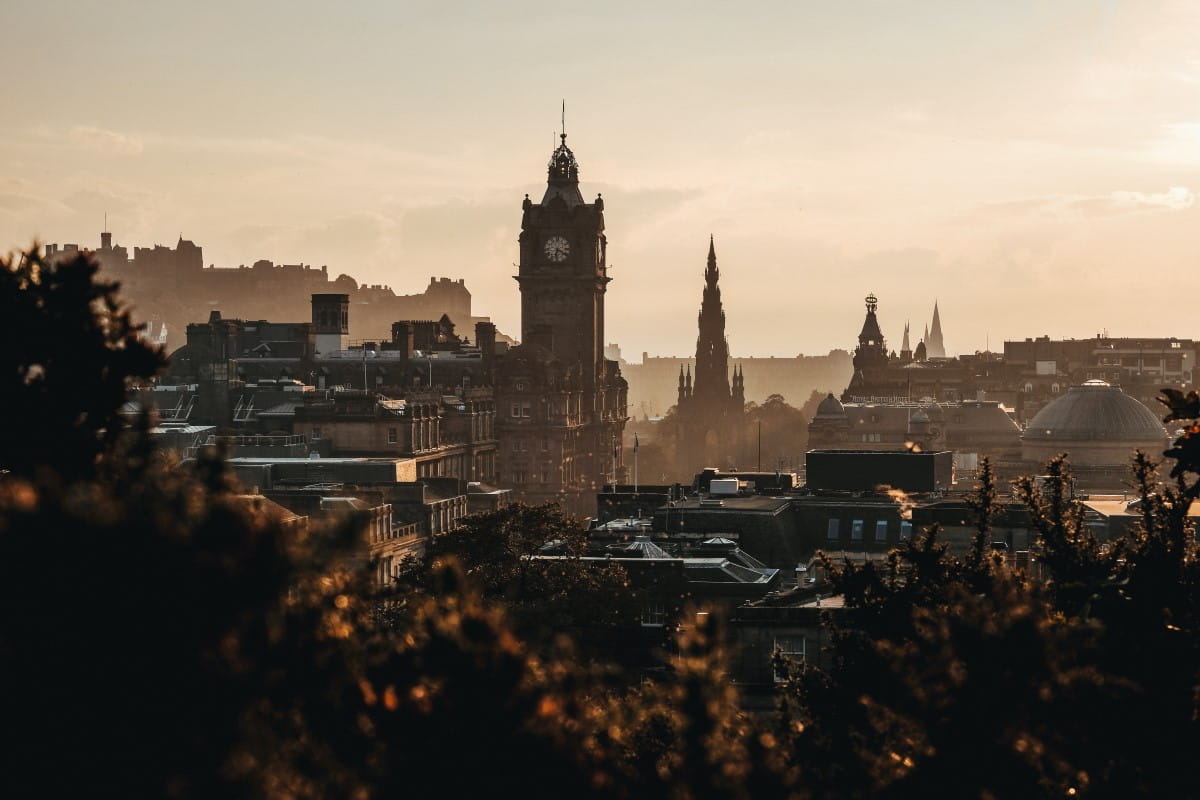
Scotland’s capital city, Edinburgh, is frequently voted one of the best places to visit in the world, and readers of a range of media outlets like Condé Nast have included it in their ‘must-see’ travel guides. The city has over 1,000 years of fascinating history waiting to be discovered, and it’s one of the top cultural centres in Europe.
Edinburgh was the first-ever city to be granted the title of UNESCO City of Literature and it’s one of the few cities on the planet to have its centre elevated to UNESCO World Heritage status.
It also hosts 12 major festivals each year, and depending on the month, visitors can see the Edinburgh Fringe (the biggest multi-arts festival in the world), Edinburgh’s Hogmanay (the biggest street party in the world) and the Royal Military Tattoo (one of the biggest combined military events in the world), to name just three.
In addition, there are fascinating medieval streets to explore, enormous parklands to walk through, a royal palace, a royal yacht, and a majestic castle. And that’s without including iconic attractions like Edinburgh Zoo, Greyfriars Kirk, the National Museum and the National Art Galleries.
In this article, we’ll take a closer look at the city of Edinburgh to discover the best ways to travel around it, some of the unmissable festivals that might be staged during your visit, where to stay, where to eat, and what the weather might be like when you arrive.
Travelling Around Edinburgh

Given that Edinburgh is a remarkably small city, it is simple to walk to all of the major attractions—as long as you know where to go. First-time visitors have a few options if they’re not too sure about which direction to head in, which starts with the city’s bus network.
Edinburgh Buses
There are two bus companies that serve Edinburgh, but in my opinion, one is far superior to the other. One operator is Lothian Buses, which is distinguished by its red and gold livery, and the other is First Bus, which has a silver, blue, and purple colour scheme.
Before I go any further, I’ll get straight to the point and say don’t even bother with First Bus. While they’re the only option in many cities and therefore have a monopoly, in Edinburgh the home-grown Lothian Bus network blows them out of the water in every single department.
I’ve travelled all over the world, and I’ve no hesitation in saying Edinburgh’s Lothian buses rival any other city. Their vehicles are spotlessly clean and modern, they arrive (almost) always on time, and the network stretches to every corner of the city and the surrounding area.
Lothian Buses also operate the new tram system, which whisks travellers from the airport to the city centre in double-quick time, and an all-day ticket that allows unlimited travel across the city can be purchased for just a few pounds.
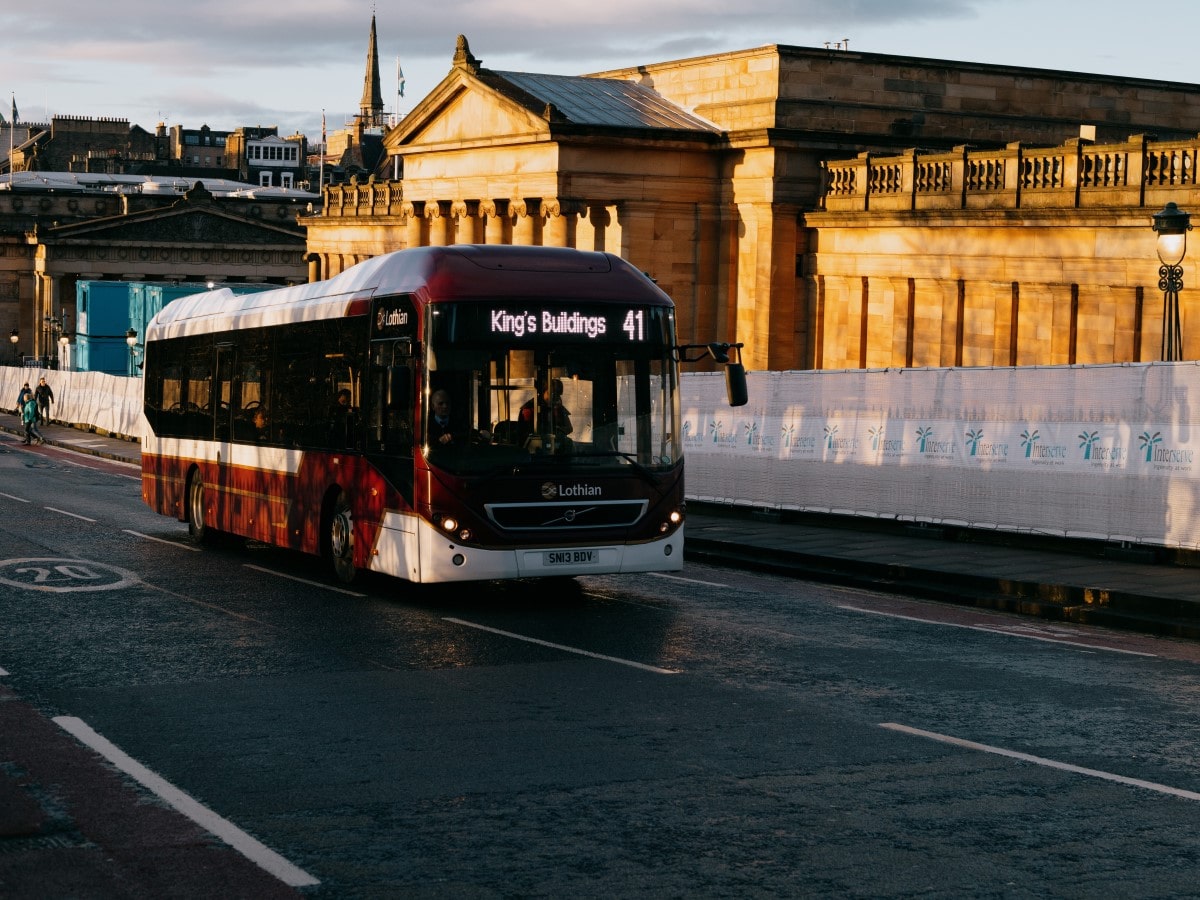
Tickets can be purchased via contactless readers on the bus, or you can visit one of the city centre travel shops (there’s one on Waverley Bridge) where you can buy a pre-paid card or a book of tickets that will last a week or more.
If you’d like to see Lothian Bus routes, prices, and bus stops, I recommend bookmarking the official Lothian Bus website. Also, download the Lothian Bus app, which has a very useful bus finder that shows exactly where the next bus is on its route and how long it will take before it arrives at the next stop.
Edinburgh Taxis
The other option for exploring Edinburgh is by taxi, and thankfully there are dedicated taxi ranks near all the major venues that have official black cabs.
You could book a minicab that will be a wee bit cheaper, but black cabs are superior in every regard, and they have fixed rates, so there’s no chance that tourists will be taken for a ride (figuratively speaking). The firms I recommend are Central Taxis and CityCabs, both of which have excellent online booking apps.
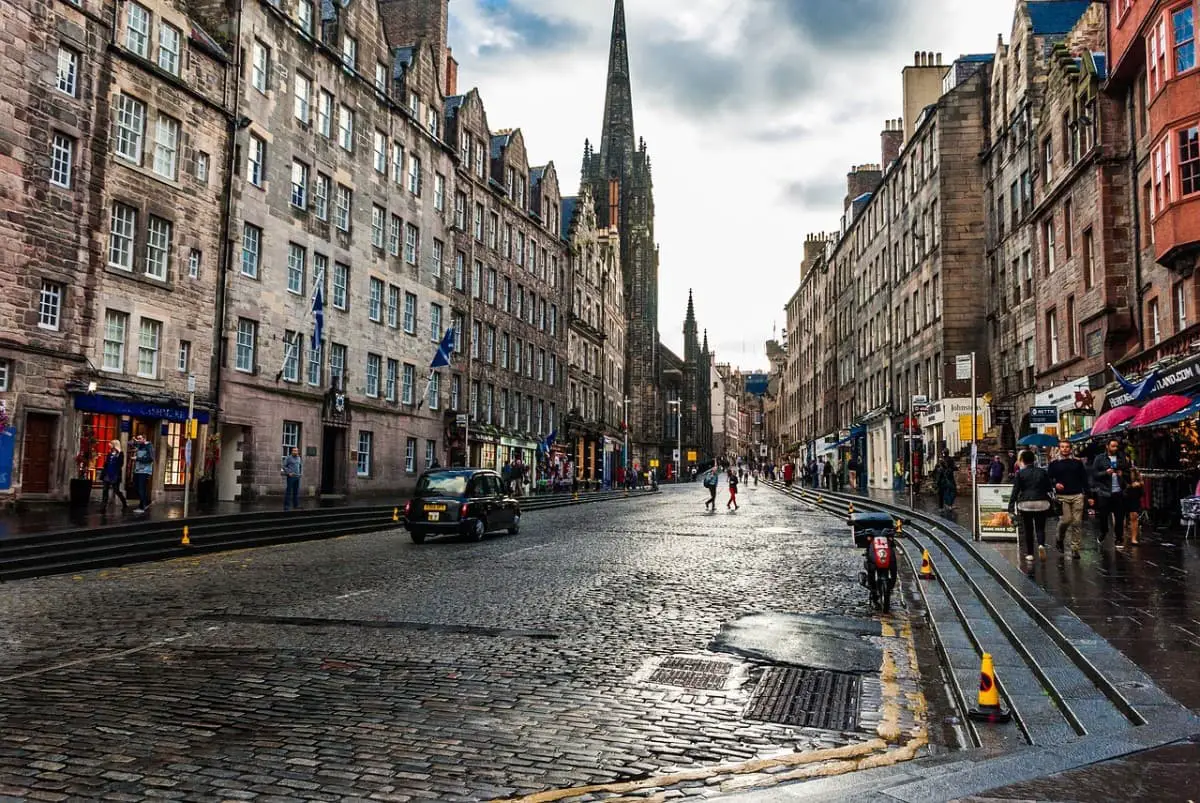
Walking in Edinburgh
Finally, as I mentioned at the start of this section, you can always just explore the city by walking. Everything really is within walking distance in Edinburgh, and unless you have mobility issues, you’ll find it easier and more enjoyable to soak up the atmosphere by setting off on foot with a good map in hand, plus you’ll save a bundle on bus and taxi fares.
If walking sounds like a good option to you I recommend purchasing the Collins Edinburgh Pocket Map (Amazon) which is small enough to always keep with you and features a detailed map of everywhere you need to find during your visit.
Used in conjunction with the Lonely Planet Pocket Guide to Edinburgh (Amazon) you’ll be able to breeze between all the top attractions with a minimum of fuss.
Edinburgh Flights
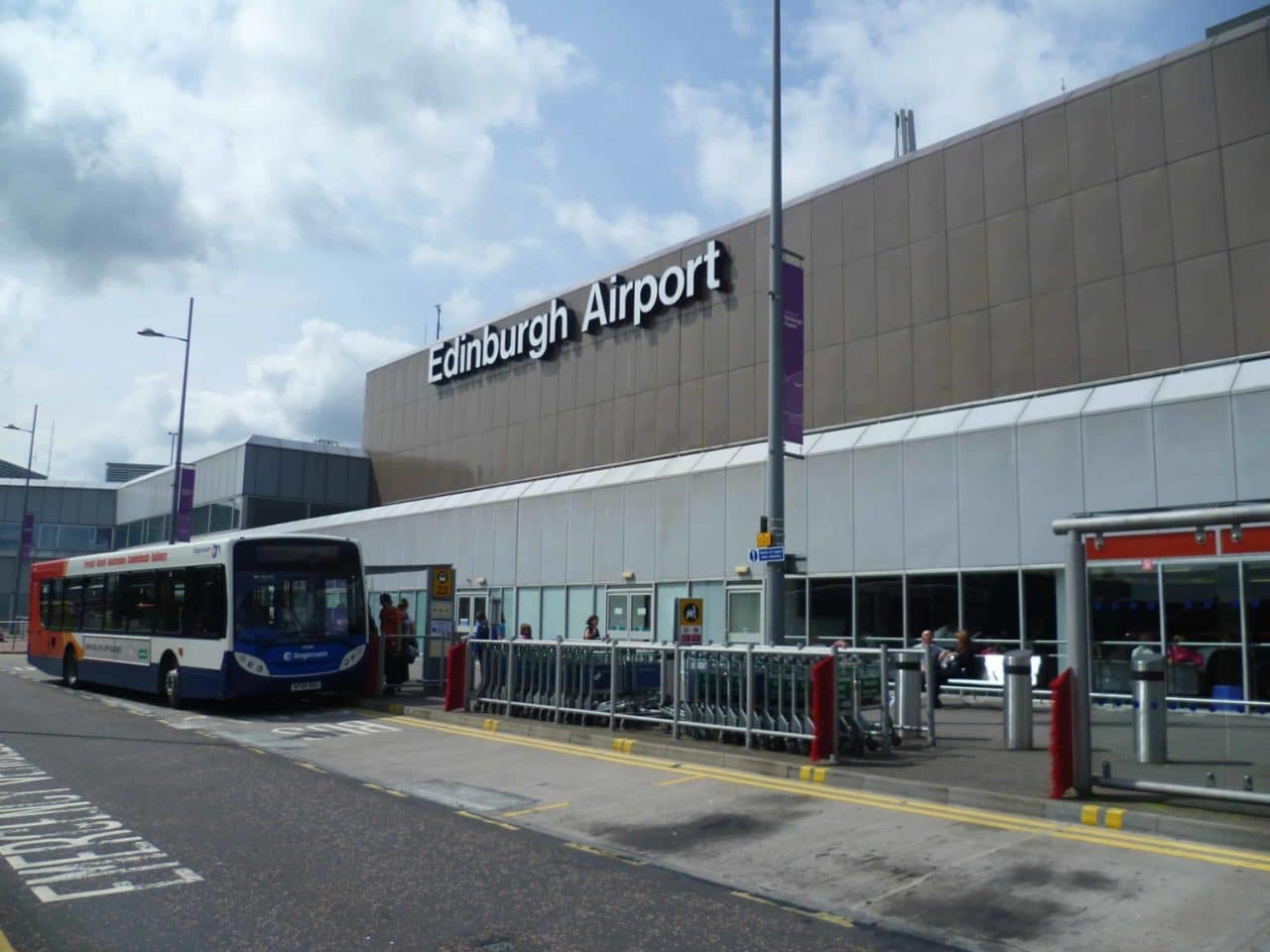
Edinburgh Airport lies 8 miles to the west of Princes Street and is the third biggest airport in the UK in terms of passenger numbers. Getting to it from the city centre is easy by bus, tram, and taxi, and depending on the time of day, the average journey time is just 30 minutes.
A regular airport bus is operated by Airlink 100 and runs every 10 minutes, 24 hours a day, from Waverley Bridge (the central train station in Edinburgh city centre). Tickets can be purchased at the airport information desk, at the bus stop, from the driver, or online.
Full airport bus details are available to view on the Edinburgh Airport website bus and coaches website. Alternatively, visitors can take a tram ride into the city centre, which takes around 40 minutes. For further information for travellers arriving and departing from Edinburgh Airport, visit The Edinburgh Airport Guide, and for information about Scotland’s other airports, read A Guide to Scotland’s Airports.
Edinburgh Trains
Edinburgh’s two major railway stations, Waverley and Haymarket, operate regular services to other parts of Scotland and the UK throughout the day. Both stations can be easily walked from the city centre, with the main Waverley station located in the heart of the city on Prince’s Street.
- Caledonian Sleeper is a popular overnight service operating between Edinburgh and London (Euston) every night (except Saturday).
- ScotRail operates a full schedule of trains throughout Scotland.
Festivals in Edinburgh

Edinburgh is one of the biggest festival cities in Britain, and each year, well over a million people head to Scotland’s capital to watch everything from art shows to music events and Christmas extravaganzas. These festivals run throughout the year, so you’re pretty much guaranteed to find one staged in the city whenever you visit, but there are a couple that are absolute must-dos if you’ve never been to Edinburgh before.
The first, of course, is the Fringe, the largest multi-arts festival in the world. The Edinburgh Fringe Festival has been running since 1947, and from humble beginnings, it now plays across 25 days in 300 different venues.
More than half a million people attend the Fringe each year to watch upwards of 50,000 shows that include comedy, dance, theatre, music, circus acts, and every other art form you can think of.
Another top festival is the Royal Military Tattoo, which is staged on the esplanade of Edinburgh Castle and features a varied collection of military bands from across the globe. This exciting spectacle includes acrobatics, motorcycle stunt riders, military demonstrations, dance acts, and the massed Scottish pipers of the British Army.
It’s a superb event that really has to be seen to be fully appreciated – but be aware the tickets sell out fast so I recommend booking your ticket as soon as possible.
Two other major festivals in Edinburgh are Edinburgh’s Christmas and Edinburgh’s Hogmanay, the first of which celebrates Christmas (obviously), while the second centres around the new year. The Christmas festival runs the entire length of December and is a riot of colour and sound where the city centre comes alive with fun fair rides, a German market, Christmas-themed theatre shows, an ice rink, and Santa’s winter wonderland.
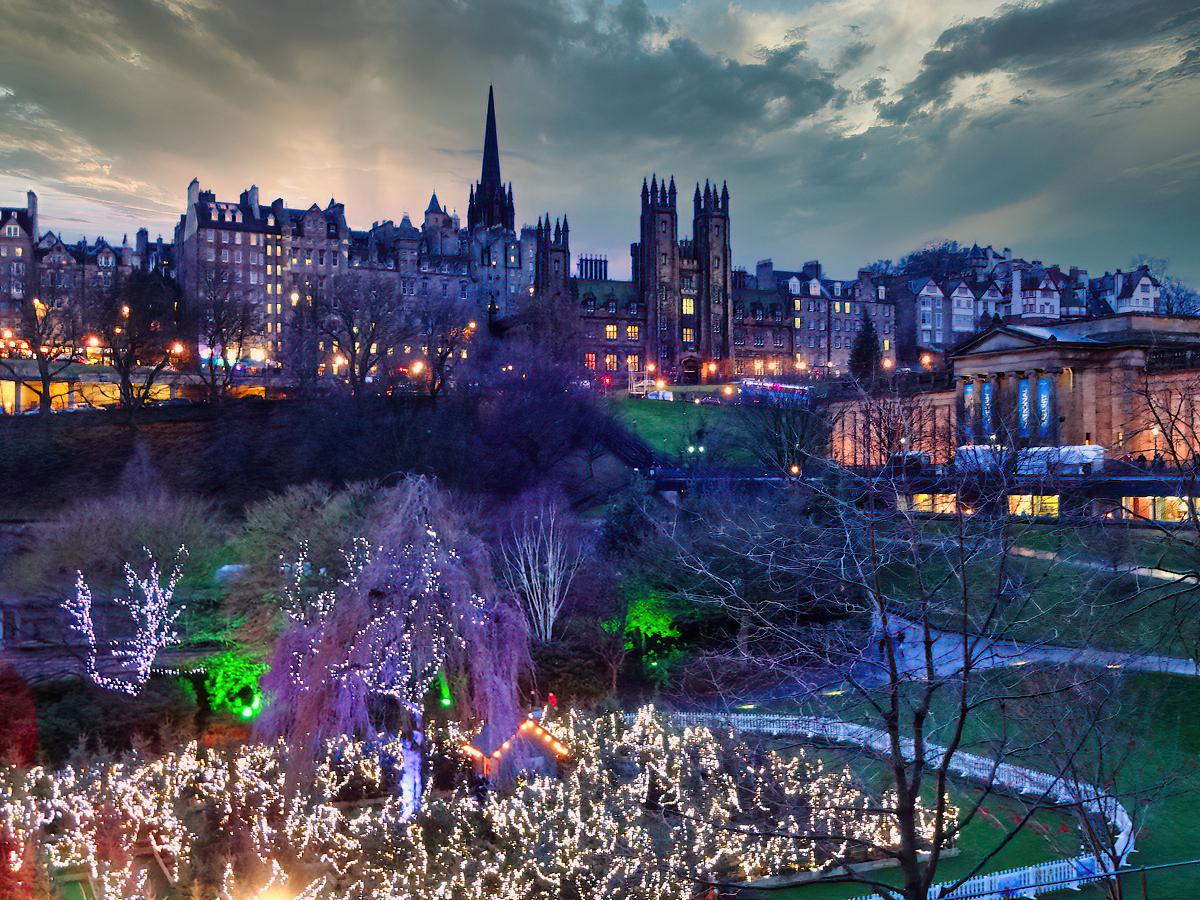
Edinburgh’s Hogmanay, meanwhile, is geared more towards adults with lots of evening events, including the famous torchlight procession through the city centre, the world’s biggest outdoor street party, and a number of live music events.
The city also hosts book festivals, art festivals, jazz and blues festivals, storytelling festivals, and many others that alternate each year. It’s easy to lose track of exactly what’s on at any given time, so I recommend bookmarking the Edinburgh Festival City website which has news updates, times, and venue details for each festival.
| Edinburgh Festival | Dates |
|---|---|
| Edinburgh International Science Festival | 4th to 19th April |
| Edinburgh International Children’s Festival | 20th to 31st May |
| Edinburgh International Film Festival | 17th to 28th June |
| Edinburgh Jazz & Blues Festival | 17th to 26th July |
| Edinburgh Art Festival | 30th July to 30th August |
| Edinburgh Festival Fringe | 7th August to 31st August |
| Royal Edinburgh Military Tattoo | 7th August to 29th August |
| Edinburgh International Festival | 7th to 31st August |
| Edinburgh International Book Festival | 15th to 31st August |
| Scottish International Storytelling Festival | 16th October to 31st October |
| Edinburgh’s Christmas | Late November to Early January |
| Edinburgh’s Hogmanay | 30th December to 1st January |
Accommodation in Edinburgh

As a city that thrives on tourism, it’s no surprise there are hundreds of hotels to choose from, whether it’s a 2-star B&B on the city’s outskirts or a 5-star luxury hotel on Princes Street. Sadly, as with any other tourist-centric city, Edinburgh’s hotels really ramp up their prices at peak times, and it’s not uncommon for the same hotel room to increase by over 300% from one week to the next.
Christmas and New Year are prime targets for inflated prices due to the popularity of the Christmas and Hogmanay festivals, but the whole of summer also comes with eye-watering room prices thanks to a combination of warm weather and the Fringe festival.
However, it’s possible to save a bundle on accommodation in Edinburgh by simply booking outside of the main tourist season, as you’ll see in the table below, which compares the quiet month of January to the busy month of August.
| Edinburgh city hotel (2 adults sharing per night) in August | Rating | Cost |
| The Scotsman Hotel | Luxury | £337 |
| Ibis Edinburgh Park | Budget | £125 |
| easyHotel Edinburgh | Budget | £109 |
| Edinburgh city hotel (2 adults sharing per night) in January | ||
| The Scotsman Hotel | Luxury | £200 |
| Ibis Edinburgh Park | Budget | £44 |
| easyHotel Edinburgh | Budget | £34 |
Where you decide to stay will completely depend on your budget, but for most people, the top priority will be staying as close to the city centre and its attractions as possible. With that thought in mind, I’ve listed a few recommendations for Edinburgh hotels that are all located within 1 mile (1.61 km) of Princes Street.
| Luxury Hotels (4 & 5 star) | Budget Hotels (2 & 3 star) |
|---|---|
| The Balmoral Hotel | easyHotel Edinburgh |
| The Scotsman Hotel | CoDE Pod |
| Cheval, The Edinburgh grand | Cityroomz Edinburgh |
| The Rutland Hotel | YOTEL Edinburgh |
| Nira Caledonia | Motel One Edinburgh |
Of these hotels, the best of the bunch is The Balmoral Hotel, which is located in a prime position next to Waverley train station and is as luxurious and refined as it gets. The hotel boasts six restaurants and bars and a wellness centre with a luxury swimming pool. You can discover the hotel in detail with this visitor guide: The Complete Guide to the Balmoral Hotel.

The Scotsman is another luxury hotel in Edinburgh that’s just as upmarket as the Balmoral and features an even wider list of facilities. Guests can enjoy a 48-seat cinema, a highly-rated restaurant and enormous rooms – many of which include separate lounge areas.
Prices for the Balmoral and the Scotsman hotels range from under £200 to over £500 per night depending on the time of year and the type of room.
Meanwhile, on the budget end of Edinburgh’s hotels, CoDE Pod and Cityroomz come highly recommended on almost all hotel comparison sites, and both are in superb locations for city sightseeing. Of the two, I would have to give the nod to CoDE Pod, The CoURT (no idea why they spell it like that…), which is located in the heart of Edinburgh’s historic Royal Mile, just 100 yards from The Real Mary King’s Close attraction.
One night in this city centre budget hotel costs as little as £50 in winter and only rises to £90 in the height of summer for a double room with a private bathroom, which is fantastic value when you consider its location and how easy it is to visit the city’s best attractions.
Where to Eat in Edinburgh
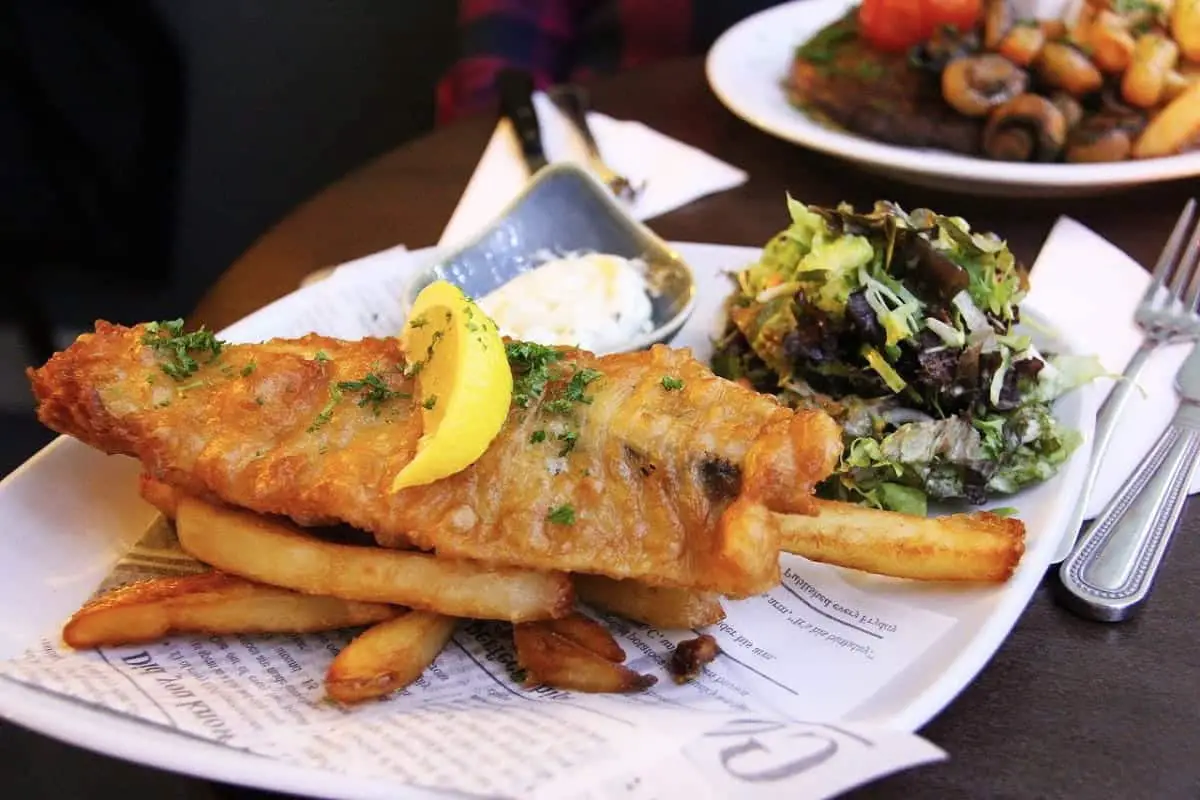
Foodies are spoilt for choice when it comes to dining in Edinburgh, as the city boasts many of the top-rated restaurants in Scotland where diners can savour dishes from every corner of the globe, whether they’re in the mood for pizza, curry, Thai, fusion, or nouvelle cuisine.
All the best hotels have very good restaurants that you can’t really go wrong with, but you’ll need deep pockets if you’re thinking of eating in them each night, especially considering Edinburgh is officially the second most expensive place to eat in Britain after London.
As an example, The Balmoral Hotel invites visitors to its Michelin-starred Number One restaurant with a delectable 7-course menu that costs a not-so-delectable £110 per person, with a selection of matched wines costing an additional £75 per person.
Another high-class restaurant can be found just a few yards down Castle Hill near Edinburgh Castle, where diners can relax in sumptuous surroundings at The Witchery. This is my personal favourite of all the restaurants in Edinburgh, as the decor is the most glamorous in the city, and eating there is a real event, although it comes with a matching price.
Expect to pay £60 for a seafood starter, £50 for a steak, and £100 for a seafood platter, with bottles of wine that soar into the thousands depending on the year. These examples are extremes, though, and those of us that aren’t mega-wealthy can have an equally enjoyable dining experience for less than £50 per person.
There are so many restaurants in Edinburgh that it wouldn’t be possible to include them all in one article, but I’ll list a few of my personal favourites below.
Dishoom, 3a St Andrew Square, Edinburgh, EH2 2BD. An Indian restaurant that pays tribute to the Iranian cafés that are prevalent in Bombay. With great food and classy surroundings, Dishoom is in a different class from the usual run-of-the-mill Indian restaurants.

Gaucho Edinburgh: 4a St Andrew Square, Edinburgh, EH2 2BD. A lavish Argentinian restaurant that serves the best steaks in the city. The dining experience at Gaucho is relaxed and informal, but you won’t feel out of place if you dress up for a special night out.
Fazenda Edinburgh, 102 George St., Edinburgh, EH2 3DF. Fazenda is a Brazilian restaurant that centres around meat-based dishes from South America, although they do offer vegetarian and vegan options as well. Of particular note is their delicious lunchtime menu, which has large portions at reasonable prices.
The Ivy on the Square, 6 St Andrew Square, Edinburgh, EH2 2BD. The Ivy is a fairly new addition to Edinburgh, but it has already gained a following with diners looking to enjoy good-quality British food at great prices. As an example, a two-course menu with a honey-baked ham starter and a roast salmon main costs just £17. Not bad for an up-market city-centre restaurant.
Wedgwood The Restaurant, 267 Canongate, Royal Mile, Edinburgh, EH8 8BQ. A visit to Edinburgh wouldn’t be complete without sampling traditional Scottish food. One of the best places to try local Scottish produce has to be Wedgwood, which serves dishes including Isle of Mull scallops, Scottish roe deer, and mouth-watering Scottish cheese selections.
If you’re looking to sample Scotland’s best traditional food, I recommend Whiski (119 High Street, Edinburgh, EH1 1SG), which has friendly surroundings, great food, and one of the best selections of single-malt Scotch in the city. After all, what else would you drink with Scotland’s #1 iconic dish?
Shopping in Edinburgh
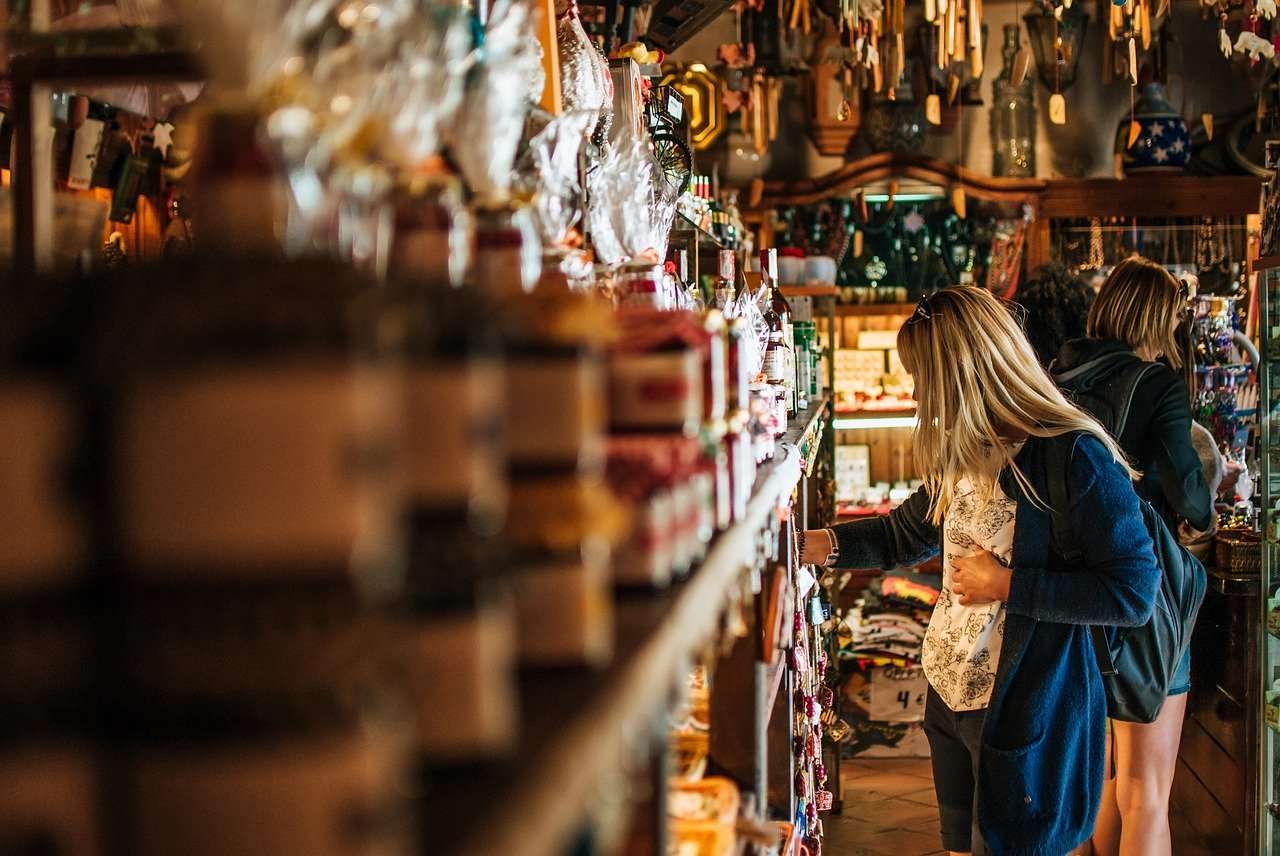
Edinburgh isn’t the main place to go shopping in Scotland—the title goes to Glasgow—but it has a few shopping malls and streets that are definitely worth checking out, whether you’re looking for the latest designer handbags or a cheap souvenir of your visit.
Starting on Princes Street in the heart of the city you’ll find a combination of fast-food restaurants, mobile phone dealers, clothing chains and department stores just like anywhere else in the country. Elsewhere, a brand-new shopping centre has been built that looks like it’ll somersault Edinburgh into the top spot for shopping in Scotland. Check out the Edinburgh St. James Quarter website for details.
Opposite, there’s a slightly older but still decent shopping centre called The OMNi Centre. This is notable as it’s located next to the Edinburgh Playhouse Theatre, making it an ideal place to head to for pre- or post-show food and drinks.
If you head to St. Andrew Square (follow St. Andrew Street opposite the Waverley shopping mall), you’ll find Multrees Walk, which is home to several luxury brands like Louis Vuitton, while smaller boutique clothes shops can be found across the square along George Street.
Finally, if you’re looking for a memento of your visit, whether it’s a bottle of whisky, tartan slippers, or a novelty haggis, you won’t go far wrong with taking a walk along The Royal Mile. There are loads of ‘tartan-tat’ shops all the way from Holyrood Palace at the bottom to the castle at the top, and you’re bound to find a gift you like, but be aware you’ll probably find exactly the same gift for half the price outside the city centre.
The Best Time to Visit Edinburgh
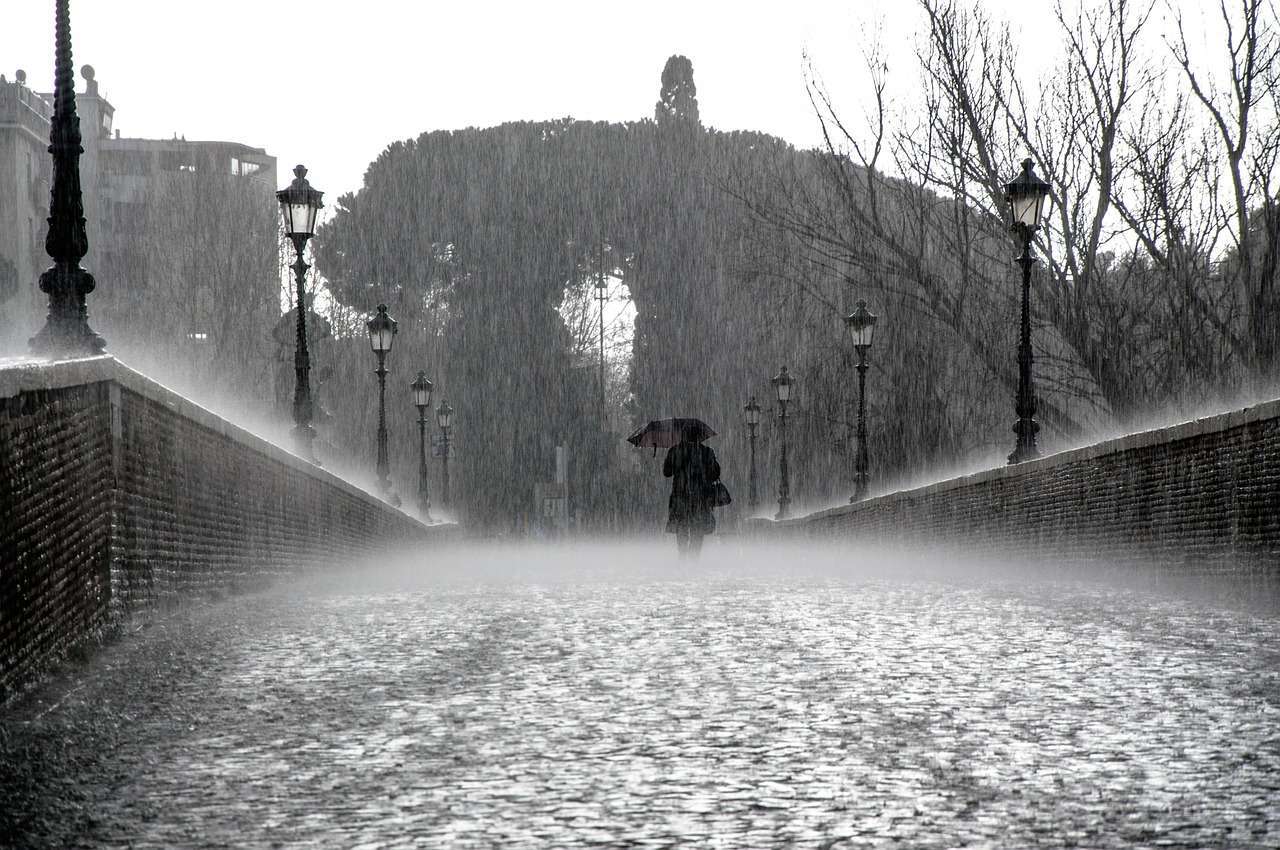
It could be argued that there isn’t really a ‘best’ time to visit Edinburgh, as there are always things to do and places to visit, no matter the time of year. You’ll obviously have a great time in August when the Fringe is running, but you’ll also have an amazing time in December during Edinburgh’s Christmas festival.
Even the dark depths of winter have their benefits, as the hotels dramatically reduce their prices in an effort to entice guests, and tourist attractions are blissfully free of the crowds that heave through the city centre in the summer months. That being said, there are two reasons that could have a significant impact on the time of year you come to Edinburgh, and that’s the temperature and the daylight hours.
Scotland typically sees the coldest months from November to February, when temperatures rarely rise above 5 °C and are just as likely to hover around 0 °C. If you’re travelling here in a hot climate, it could make a visit rather uncomfortable, to say the least.
For a sightseeing trip to Edinburgh, the temperature isn’t as important as the likelihood of rain because even if it’s mild you can feel utterly miserable if there’s a near-constant drizzle – which we typically see the worst of in autumn and early spring.
In addition to freezing drizzle, Edinburgh is renowned for the harr, which is a thick mist that rolls in off the Firth of Forth. The haar can occur throughout the year and can last an entire day, but it’s usually gone by midday. When it does appear, it’s often so thick that it obliterates the sky, which can make temperatures fall dramatically, even in the summer.

The other point to bear in mind is the number of daylight hours we get in Edinburgh thanks to the city’s high latitude which ensures summer days bask in 17 hours of daylight but winter days see a much lower 7 hours.
That’s something to bear in mind if you visit in December and January as you’ll need to plan visits to outdoor attractions (e.g. Holyrood Park and Arthur’s Seat) accordingly.
If Scotland’s weather is one of your main considerations for the time of year to travel, I’ve compiled a list of what you can expect to experience each month, though bear in mind that these are only averages and the weather in Edinburgh can change at the drop of a hat.
| Month | Temp High in c | Temp Low in °C | Rainfall in mm | Daylight Hours |
|---|---|---|---|---|
| January | 6 | 1 | 62 | 7.5 |
| February | 7 | 1 | 46 | 9.5 |
| March | 9 | 2 | 48 | 12 |
| April | 11 | 4 | 39 | 14 |
| May | 14 | 6 | 46 | 16 |
| June | 17 | 9 | 59 | 17.5 |
| July | 19 | 11 | 65 | 17 |
| August | 18 | 11 | 61 | 15 |
| September | 16 | 9 | 57 | 13 |
| October | 13 | 6 | 68 | 10.5 |
| November | 9 | 3 | 60 | 8.5 |
| December | 7 | 1 | 63 | 7 |
As someone who resides in the city, I would probably suggest August and December as the two best times to visit Edinburgh. As already mentioned, visiting in August means you’ll get to experience the fringe as well as the Royal Military Tattoo.
The atmosphere alone makes a visit in August worth it but you’ll also be able to enjoy warm weather and (hopefully) little rain. The downside, of course, is that everything will be more expensive.
December comes in a close second for me, as the city has an amazing atmosphere in the colder months. Just take a walk along the mediaeval Royal Mile on a brisk winter’s day and warm up in a cosy pub to see exactly what I mean. The other benefit of visiting Edinburgh in December is that you get to enjoy the Christmas festivities, which are rapidly becoming as popular as the Fringe.
The city centre morphs into a dazzling light show in December with lots of decorations and fairground rides, and there are a plethora of theatre shows, including the camp and cheeky pantos that are as British as fish and chips.
Facts About Edinburgh

1: Edinburgh is split into two halves: the mediaeval Old Town and the newer, erm, New Town. Everything south of the castle along the Royal Mile and down to the palace is considered the Old Town. Everything north of the castle on the other side of Princes Street Garden is considered the New Town. You can find out more about Edinburgh’s fascinating history by downloading my free Guide to Edinburgh.
2: Prepare for a bit of a pong when you get here, but not the type of smell that lingered 300 years ago when the city got its nickname, ‘Auld Reekie’. Back then, the city streets used to be ankle-deep in human waste, as households in the tenement blocks would simply chuck their buckets of excrement onto the streets below.
Luckily those days are long gone and today you’ll smell the fragrant aromas of flowers (Edinburgh is officially the greenest city in Britain, beer (there are several breweries close to the city centre) and food (Edinburgh has become the Scottish mecca for artisan street food).
3: If you stand outside St. Giles Cathedral on The Royal Mile you’ll notice the city’s residents clearing their throats and spitting at a particular spot on the ground. This isn’t because the people all have colds; it’s because they’re showing their disdain for the Old Tolbooth, a building that was used to punish Edinburgh’s poorest who couldn’t repay their debts. Today, the site is marked with a motif on the ground known as the Heart of Midlothian.

4: The humble Scottish boozer is at the very heart of Edinburgh culture, and you’ll find over 700 pubs spread across the city. Nearly all the old working-men’s pubs have transformed into trendy bars and craft ale houses in the city centre, but there are still plenty of spit-and-sawdust pubs on the outskirts. Take my advice and get your beer in the city centre.
5: Fish and chips are almost as iconic as haggis in Scotland, but in Edinburgh, they put a unique spin on it by drizzling everything in ‘sauce’, which is a combination of vinegar and spicy brown sauce. The only thing I wouldn’t suggest you put it on is Edinburgh’s other culinary delight, the deep-fried Mars bar.
6: Edinburgh has a dark and grisly history that most visitors don’t know about, but you can discover a few horror stories by reading my article about Murders and Executions in Edinburgh.
7: There are two main football clubs in Edinburgh that have quite a rivalry going on: Hearts of Midlothian (locally known as simply ‘Hearts’) and Hibernian Football Club (known as ‘Hibs’). Hibs colours are white and green, while Hearts wear maroon and light blue, and both sets of supporters are very proud of their teams.
Is Edinburgh in Scotland worth visiting?
Edinburgh is definitely worth visiting. The city allows tourists to experience a collection of stunning historic buildings without having to walk far between them and there are superb festivals held throughout the year including the Fringe in summer and Edinburgh’s Christmas in winter.
How many days in Edinburgh do you need?
The majority of the main attractions in Edinburgh can be visited over 2 days at a steady pace, or 1 day if you rush through them.
Edinburgh is a compact city so the city centre can be walked around without needing to use public transport, though joining an open-top tour bus is recommended as it will take you to each of the main attractions.
Which is better to visit Edinburgh or Glasgow?
Neither city is ‘better’ than the other as they each offer a different experience. For historic attractions, Edinburgh is recommended, while for nightlife and shopping, Glasgow is recommended.
What’s so good about Edinburgh?
Edinburgh has well over 1,000 years of history and is famous for having many of the best-preserved medieval buildings in Britain. The Highlight is Edinburgh Castle but there are many other attractions on the Royal Mile and all over the Old Town.
Edinburgh is also one of the greenest cities in the UK thanks to places like Holyrood Park and it offers easy access to other regions such as Fife, Glasgow, and the Scottish Borders.

